Annals of Marine Science
Different approaches to the protection and enhancement of underwater archaeological sites: Acquirements and Aspirations
Pari Kalamara*
Cite this as
Kalamara P (2022) Different approaches to the protection and enhancement of underwater archaeological sites: Acquirements and Aspirations. Ann Mar Sci 6(1): 021-033. DOI: 10.17352/ams.000028Copyright License
©2022 Kalamara P. This is an open-access article distributed under the terms of the Creative Commons Attribution License, which permits unrestricted use, distribution, and reproduction in any medium, provided the original author and source are credited.This paper presents aspects of underwater cultural heritage management in Greece, focusing mainly on accessibility to the diving community and the general public. More specifically, it discusses different approaches to the protection and enhancement of Underwater Archaeological Sites, already put into practice over the last years (2018-2021) by the Ephorate of Underwater Antiquities, the public service of the Hellenic Ministry of Culture and Sports responsible for the management of underwater heritage. Moreover, it analyses the aspirations for the future, as these took shape already at the beginning of 2021. Lately, cultural management has turned into a fast-growing sector with multilevel developmental prospects. In order to tap into the underwater cultural heritage potential, we must always take into consideration the identity and special characteristics of each underwater site as well as the different possibilities of access — physical or virtual — that are rapidly changing because of new technological achievements. All these parameters affect significantly decision making and the undertaking of relevant initiatives. Examples of the pilot implementation of the opening of underwater archaeological/cultural sites to the public will be presented. Through them, preliminary conclusions concerning the efficacy of the selected managerial approaches can be drawn, while at the same time domains where more should be done will be highlighted.
Introduction
This paper was first presented at the International Conference “Dive in Blue Growth II” held between the 12th and the 14th of May 2021 as a virtual conference [1] due to the Covid-19 pandemic, organized in the framework of the European cooperation project “MeDryDive” [2], delivered during the conference session entitled “Promotion and protection of Accessible Underwater Cultural Heritage Sites (AUCHS)”.
Hence, it intends to put forth an overview of issues related to accessible underwater archaeological or cultural sites in Greece in general, and does not focus exclusively on the category of underwater sites described in Greek legislation, especially in article 6 of Law 4688/2020 [3], by the technical term ‘Accessible Underwater Archaeological Sites’(AUAS) (Figure 1). The latter category is only part of an underwater heritage that is nowadays accessible to the public. The concept of an accessible underwater archaeological/cultural site can also apply to a wide range of coastal archaeological sites (Figure 2) or individual shipwrecks dating back to different periods (Figure 3). Moreover, different aspects of accessibility, such as scuba diving, snorkeling, free diving, etc., may be related to the issues addressed.
The main purpose is first to clearly describe the field, where the management by the Ephorate of Underwater Antiquities (EUA) under the Hellenic Ministry of Culture and Sports has potential application, with respect to the accessibility of underwater cultural heritage, as well as each separate area of this field. Then, I will point out the progress made in March 2021 in terms of the protection and promotion of each underwater site category, also the challenges and prospects for the future, in light of strategic goals, as set in principle within the national and the international institutional framework for cultural heritage in general. More specifically, this framework involves the Greek Law 3028/2002 “On the protection of antiquities and cultural heritage in general” [4], but also other laws concerning specifically underwater cultural heritage (Law 3409/2005 “On recreational diving and other regulations” [5]; Law 4688/2020 “On special forms of tourism, provisions for tourism development and other provisions” [3]; Ministerial Decision “for the nomination of shipwrecks as protected monuments” [6], according to which all shipwrecks sunk more than 50 years ago are declared underwater monuments, including a protection zone of 300m around them, which were all recently codified-at the end of 2021-to the Law 4858/2021 “Sanction Code of legislation for the protection of antiquities and cultural heritage in general” [7]), as well as the UNESCO Convention “On the protection of the underwater cultural heritage” of 2001 [8,9]-although the latter has not yet been ratified by the Greek State-and other international conventions concerning cultural heritage in general. These strategic goals are also reflected and specified every year in the annual Action Plan of the different services of the Hellenic Ministry of Culture and Sports, which also mirrors and incorporates the agenda of each political leadership.
In recent decades, countries across the world with water resources, as documented in the relevant bibliography, covering various parts of Europe [10-14], the United States, Australia, the Caribbean and the Pacific [15-17], etc. [18,19] have been concerned with the issue of promoting underwater archaeological sites and particularly making them accessible to the public. The publications referred to here have been indicatively selected; however, this list is by no means exhaustive.
The opening of underwater sites to the general public through virtual diving, owing to new technologies, also finds numerous international examples to which reference is selectively made [20,21], while some of them concern Greek underwater cultural assets [22-24].
Examples of pilot implementation in Greece of the opening of underwater archaeological/cultural sites to the public will be presented. Through them, some initial conclusions about the effectiveness of the selected managerial approaches can be reached, while simultaneously, domains in which more should be done will be emphasized.
In summary, this article presents primarily the activities of the Ephorate of Underwater Antiquities for the period between 2018 and 2021, in relation to the opening for the first time in Greece of Accessible Underwater Archaeological Sites to the general public-divers and non-divers-and simultaneously describes future prospects for the enhancement of underwater cultural heritage. As such, it adds to the literature on underwater heritage management and governmental approaches and discusses in detail organizational proposals and methodological tools developed and applied for the first time in the context of this project by the project team and the author. These could be effectively utilized in the future in similar undertakings, facilitating and accelerating their implementation.
Discussion
Prior to the discussion on the different approaches already adopted for the protection and enhancement of Underwater Archaeological Sites in Greece, the acquirements and aspirations concerning them, it is deemed necessary to present the main strategic objectives related to the accessibility of underwater cultural heritage, which are also reflected in the recent activities of the Ephorate of Underwater Antiquities [25-27], approved annually by the Hellenic Ministry (2018-2021) (Table 1).
Each one of these objectives is further analyzed below:
Cultural heritage (including its underwater sector) should be physically and intellectually accessible to all (Figure 4)
A key prerequisite to render this possible is for scientific research into the respective underwater site or shipwreck to take precedence. This is underlined by several bibliographical sources [10,28] and is well embedded in the policies and procedures of the Hellenic Ministry of Culture and Sports in respect of the nomination of an underwater site as accessible. However, this leads to extensive debate over the character of research, the means of its completion, its impact on the seabed, its connection with in situ preservation as well as the compatibility of research with accessibility [18,29-31]. In any case, the dual concept of accessibility (physical and intellectual) influences and guides the management options for each different category of underwater sites/ shipwrecks, to which reference will be subsequently made.
At the heart of intellectual accessibility lies cognitive understanding and the interpretation of the find and its historical context, which gain increasing importance in the framework of management policies on underwater cultural heritage [31], where there is a general approach to the significance of the interpretation of the past [16] and underwater sites are viewed as underwater museums fulfilling an educational role [10]. Concurrently, special reference is made to the environment of underwater cultural heritage as a powerful tool for its understanding and interpretation.
On the other hand, at the heart of physical accessibility lies the unique experience offered and imposed by the sea that cradled these’ cultural remains, namely the natural environment through which access is achieved [10]. This is perfectly illustrated by Jules Verne in Twenty Thousand Leagues Under the Sea: “The sea is only the embodiment of a supernatural and wonderful experience. It is nothing but love and emotion; it is the ‘Living Infinite’” [18].
Underwater cultural heritage is seen and treated as a clearly distinctive but integrated part of the entire cultural heritage
Underwater cultural heritage has been identified since the beginning of the 21st century as a special sector of cultural heritage. Special reference to it is made within institutional frameworks at a national and international level, (see specific articles in Law 3028/2002 “On the protection of antiquities and cultural heritage in general” [4] and Law 4858/2021 “Sanction Code of legislation for the protection of antiquities and cultural heritage in general” [7], stipulating that a special Archaeological Service, EUA [32], is entrusted with its management) and in the UNESCO Convention “On the protection of the underwater cultural heritage” adopted in 2001 [8] but, at the same time, it must not be “isolated”. In other words, underwater cultural heritage must and can benefit from the management experience that has been successfully applied to other cultural heritage domains. It is also noteworthy that many of the articles of the Greek Law 3028/2002 apply to underwater sites and cultural remains [33] and also that, until 2002, the previous Archaeological Law 5351/1932 “On the protection of the antiquities” [32,34] lacked special articles.
Maintaining the cohesion of the underwater ‘ cultural assets
Underwater cultural goods, either on the seabed or rescued, form an integral collection of special characters that should be treated as such. New technologies (see mainly internationally acclaimed Collections Management Systems, like EMu) can effectively contribute to the management of such a dispersed group of cultural assets as a single entity, with a significant impact on their optimum protection, study and enhancement. The use of new technologies for the integrated management and, subsequently, the presentation to all parties interested — divers and non-divers — of the country’s underwater cultural reserve, preserved in situ or salvaged, is a particularly important goal. It can also contribute to the digital reconstruction of ensembles of underwater cultural remains that are split due to the different sites in which they are found or stored today, such as the cargo of the shipwreck of Nisyros [35] (Figures 5,6). As far as the EUA is concerned, the endeavor is still in the design phase and, in principle, it would be appropriate to include a database-a system for the management of immovable and movable underwater assets-, regardless of where they are stored, as well as a dynamic EUA website.
Open communication (not only in the strict bureaucratic context) of the EUA with society
The EUA strives to make underwater cultural heritage and its importance known to the widest possible audience in order to achieve its educational objectives, but also its role in raising public awareness of ‘ cultural assets, aiming eventually at their protection. As regards the public, it must be noted that it is not homogeneous but involves society’s various ultimate recipients of the EUA’s work (Figures 7,8). These include some categories of the public with a special interest in the field of underwater cultural heritage management: specialized scientists studying the underwater cultural reserve or the underwater natural environment, trained scientists and specialized technical personnel in the field of underwater archeology, the diving community that involves those seeking recreational diving, but also diving-related professionals, tourism professionals in general, the educational community, researchers in other fields, for whom the underwater environment poses a challenge for the implementation and development of their own studies, bodies of local and regional authorities, local as well as central government, journalists and many others. Moreover, the EUA attempts to connect in various ways the different audiences with its undertakings, offering them experiential activities (Figure 8) or even involving them in the management of underwater cultural assets, as was the case of the AUAS of Peristera and West Pagasetic Gulf in which a workshop was held for the diving community accompanied by a questionnaire addressed to different stakeholders [36,37].
The development of diving tourism in selected areas of the country
These areas should be selected with the intention of strengthening the local economy and social activities in their territory, in general. They are mainly remote insular regions that, for many different reasons, can hardly host other development activities, or their existing tourism product simply needs enhancement [38-41]. The Interreg Med program, in which the EUA participates, for the design of diving cultural trails in Fourni and Leros [42] (Figure 3) has recently been completed and it could support in the future the development of diving tourism in these regions.
Absorption of European funds for developmental purposes
More specifically, European funds are used in order to achieve most of the above objectives and to develop all related infrastructures of the accessible underwater sites.
Reinforcement of employment
European funds are also used to reinforce employment mainly of specialized personnel and their training in the field in the framework of European co-funded projects.
The first Accessible Underwater Archaeological Sites in Greece (AUAS): a case study of underwater cultural heritage enhancement
Several of the above strategic objectives were implemented when the first Accessible Underwater Archaeological Sites in Greece, the AUAS of Alonissos - West Pagasetic Gulf, opened, originally for a physical visit-yet not exclusively-by scuba divers or free divers. The Sites included:
− The classical shipwreck in Peristera, Alonissos [43,44],
− The late Roman shipwreck at Cape Telegraphos, West Pagasetic Gulf [45,46],
− The byzantine shipwreck of Kikynthos, Amaliapolis, West Pagasetic Gulf [47],
− The underwater archaeological site off Cape Glaros, where several shipwreck remnants of different dates are located [30,48].
The opening of underwater historic shipwrecks and archeological sites to scuba divers had been a request of the diving community as well as diving service providers and local government for decades, but for years the fear of looting imposed a ban on recreational diving throughout Greek territorial waters [28,49]. The first step towards a shift in the mentality regarding this issue was made through the enactment of Law 3409/2005 “On recreational diving and other provisions” [5], although it did not have the expected positive effect on the development of diving tourism. As far as the opening of the underwater cultural sites to scuba divers was concerned, it had to face several impractical provisions of the Law [28,49,50]. The Ministry of Culture and Sports proceeded to the first characterizations of underwater archeological sites as accessible already in 2013 in the area of Methoni, Messinia [51] and, in 2015, the island group of the Northern Sporades, West Pagasetic Gulf and Lavrio - Makronissos [52], while in 2019 four more shipwrecks in the Alonissos island area were designated as accessible [53,54] (Figure 9). However, the pilot operation of the first Accessible (to scuba divers) Underwater Archaeological Site (AUAS) in Greece, the classical shipwreck off the islet of Peristera in Alonissos (late 5th c. BC), took place as late as the summer of 2020, arousing great interest and very positive reactions among mass media worldwide [55-58].
At this point, it is worth mentioning that the planning by the EUA of the AUAS of Alonissos - West Pagasetic Gulf and the pilot opening of the AUAS of Peristera (Alonissos) were made possible in the framework of the European cooperation project BLUE MED [59-61], which lasted from 2017 to January 2020. This enabled the diving staff of the Ephorate of Underwater Antiquities to refamiliarize itself with these areas and to plan the necessary actions in order to achieve the desired results. Subsequently, the EUA’s project for the organization of the four AUAS was funded by the Thessaly Regional Development Plan 2014-2021 in the context of the National Strategic Reference Framework and is scheduled to be completed in 2023 when all the above areas will become fully operational. It should be noted that the aforesaid project of the EUA is carried out in parallel with three other complementary projects implemented by the local municipalities of Alonissos and Almyros and the Region of Thessaly respectively, in the framework of a Programmatic Agreement which the aforementioned local authorities have signed with the Hellenic Ministry of Culture and Sports. Based on this, the municipalities undertook the construction and organization of Knowledge Awareness Centers at the departure-arrival points of the AUAS and the Region engaged in the promotion of the Project in collaboration with the Ministry of Culture and Sports / EUA.
When this effort was launched, the legal tools concerning recreational diving in Greece, which could apply to the AUAS in Alonissos and West Pagasetic Gulf, were the Joint Ministerial Decision that had characterized the four (4) sites in Alonnisos and West Pagasetic Gulf as AUAS (2015) [52] and Law 3409/2005 “On recreational diving and other provisions” [5]. However, Law 3409/2005 had proved, as already mentioned, dysfunctional, as no underwater museum or underwater park had opened within its framework. Today, the steps taken and briefly presented in this paper, are substantial, enabling the functional opening of the abovementioned sites.
First of all, a new and much more effective institutional framework in regard to the organization and operation of the AUAS has been created (see below for more details).
Besides, fieldwork had been performed to clean and document the underwater cultural goods and their environment and also to design the experience for the visitors, by identifying the narrative favored by the characteristics of each site (Figures 10,11).
Becoming familiar with the available archaeological information and the broader historical context of the shipwrecks was of pivotal importance, as this knowledge forms the basis for any further planning and decision. Documentation of the finds and their integration into their historical context also provided the necessary information to support the creation of the Knowledge Awareness Centers (KACs) of Alonissos and Amaliapolis through the development of content for the digital applications [23] (Figure 12) and the exhibition panels (Figures 13,14).
Furthermore, identification, recording and elaboration of studies were needed for the construction of the infrastructures necessary for the operation of the AUAS-sometimes the pilot installation of some of these structures opted in order to test their efficacy and resistance to the marine environment: departure-arrival points, mooring buoys (Figure 15), flashing beacons for the demarcation of the visiting area, security system for underwater and surface monitoring [62] (Figure 16).
Next, approaching and resolving issues related to the experience of the visitors-divers (scuba or free divers) was also imperative. This involved planning the visit route (the distance to and from the ancient finds or the seabed, the depth limits and the time to remain underwater, etc.) (Figure 17), but also discussing the ways in which their experience could be enriched. As for the latter, the placement of signs providing basic information and/or directing visitors’ attention opted for (Figures 11,18,19). Moreover, in the AUAS of Telegraphos in West Pagasetic Gulf, visitors could also interact with an underwater digital application, specially designed for this site in order to document the systematic underwater excavation undertaken some years ago [46,47] and the shipwreck before its realization. Special zones were also specified, where visitors are encouraged to take souvenir photographs.
The musealization of the AUAS
The abovementioned interventions mark the musealization of these AUAS. By musealization, it is meant that the organization of these archaeological sites, in order for them to open to the diving community, takes into consideration the practical needs of visitors, while also focusing on the visitor experience. The interpretation of the cultural assets and the enhancement of the particular character of each of them is supported by different documentation tools. Similar interpretation tools (pre-designed routes for the divers, underwater interpretative signs, digital applications, underwater guestbook, onshore cultural centers), as well as infrastructures, are used in a series of organized cultural sites, underwater parks or underwater museums, as they may be called [11,12,18,28] (Table 2).
Study for the organization of the visit to an underwater site: standardizing its content
Simultaneously, it was necessary to design and standardize the content (no previous template and approved procedure existed for such type of study in Greece) and prepare a relevant study for the organization of each AUAS, which had to meet all the requirements of the approval policies and procedures of the Hellenic Ministry of Culture and Sports. This Study, which describes all aspects of the operation of the AUAS under consideration as well as the experience of visitors (scuba or free divers), was elaborated by the EUA entitled “Study for the organization of the visit to the AUAS of Alonissos – Pagasetic Gulf” (Table 3).
The new institutional framework
Finally, an important legislative amendment was realized, which has now created a new, functional institutional framework: the change of Law 3409/2005, “On recreational diving and other provisions” [5], which regulated recreational diving in general, but also the establishment and operation of “underwater museums” through the enactment of Law 4688/2020 “On special forms of tourism, provisions for tourism development and other provisions” [3], which is now incorporated into Law 4858/2021 that codified the legislation for the protection of antiquities and cultural heritage in general [7].
Under the new law (Article 6), accompanying diving only is still allowed at the AUAS, but a new operating model has been developed, according to which the EUA is responsible for the management of underwater archeological sites and the care for their organization, operation and safety, while the escorting of divers-visitors in groups is undertaken by licensed diving service providers, staffed by specially trained escorts approved by the Ministry of Culture and Sports/EUA —the latter is responsible for the safety of divers-visitors and for informing them about the proper conduct when visiting this kind of site.
According to Article 7 of Law 4688/2020, accompanying scuba diving is also allowed to shipwrecks, another subcategory of underwater cultural assets, following their designation as accessible by a Joined Ministerial Decision, which also stipulates the special conditions that must apply when diving into them. A group of 91 modern historic shipwrecks has already been characterized as accessible by the Hellenic Ministry of Culture and Sports and they are in the process of opening [63].
Already on the part of the EUA, by applying Law 4688/2020, the Enabling Acts provided in the above articles 6 and 7, namely the Ministerial Decision “Regulation of the AUAS” and the Joint Ministerial Decisions: a) “Qualifications of escorts at the AUAS” and b) “Terms and conditions of the visit to a selected group of modern shipwrecks”, have been prepared, supporting the completion of the institutional interventions that will allow the full functioning of the AUAS and the chosen modern shipwrecks.
Although the Law of 2005 and the relevant Joint Ministerial Decisions (JMD) of 2012 and 2015 demonstrated political will and strategic planning, it was realized that a “Business Plan” was also required, which was devised in the framework of the European BLUE MED project [64,65], thus allowing the National Strategic Reference Framework Project to be executed on a solid basis, also giving feedback, through the experience it created, to “Strategic Planning”, reflected in the new law on recreational diving. This “Business Plan” now enables the EUA to proceed to the organization of all sites, already characterized by the JMD as AUAS, and this should be defined as a priority for the future in the hope of boosting sustainable diving tourism and simultaneously improving the protection of underwater cultural heritage. The role of accessibility in the protection of underwater cultural sites is already underlined by many researchers [10,13,18,50].
What connects all the abovementioned categories of accessible underwater sites (characterized as AUAS and accessible Shipwrecks) is that they can be accessed in situ only by diving (either using self-contained underwater breathing apparatus or by free diving); however, they are rarely accessible by snorkeling.
The case of the coastal underwater sites
In addition, another major category of marine sites is presented, whose accessibility management has also been an issue for the Ephorate of Underwater Antiquities in recent years. I am referring to coastal underwater sites, now freely accessible to swimmers, the majority of which lack even basic signage. Archaeological remains are easily visible by snorkeling and physical access to them does not require the use of breathing apparatus (scuba diving).
In this field, the Ephorate took initiatives (2018-2021) to mark these places primarily through the installation of information panels on the beach that documents their identity and underlines to the public the necessity of their protection.
Furthermore, physical and intellectual access to underwater cultural remains is facilitated for all visitor categories that approach the shore, mainly snorkelers and swimmers, by marking them in the sea in a way that functions as a compass for visitors. At the port of Cechrees [66] (Figure 2), for example, the jetty will be demarcated by marker buoys and lighting, and its position will become visible from a distance, while important individual points of interest (selected underwater monuments) will also be marked in the sea through buoys and panels with plain documentation. At the prehistoric settlement in Pavlopetri [67-70] (Figure 20) marker buoys and underwater panels will also signalize points of interest and provide basic documentation of the finds for snorkelers.
Finally, new technologies are exploited in order not only to document the finds but also to enhance the visitor experience, as in the case of ancient Epidaurus [71,72] (Figure 21), where an autonomous virtual tour conducted on a small glass-bottom boat allows concurrently viewing of the archeological remains that lie on the seabed. The small boat, as well as the application, are being created in the framework of the project ‘PERIPLOUS’ [26,27], of the General Secretariat for Research and Innovation, Special Actions AQUACULTURE – INDUSTRIAL MATERIALS – OPEN INNOVATION IN CULTURE, which is expected to last from 2020 to 2023.
The first interventions in underwater archeological sites in a coastal zone, in order to improve, on the one hand, their accessibility to swimmers and the general public and, on the other, their protection, are carried out in the Region of the Eastern Peloponnese, where there are many submerged coastal remains, several of which are plainly visible to visitors. The ultimate goal is to create a network of underwater sites along the east coasts of the Peloponnese that will attract all those who love the sea.
Outreach activities related to the UCH
Furthermore, through outreach activities, the efforts of the EUA focus on raising awareness among the citizens of issues associated with underwater cultural heritage, aiming eventually at its optimal protection [15,16,28]. Particular effort is made to approach and discuss with the diving community different issues related to the management of underwater cultural assets, as was the case with the divers’ route and the infrastructures needed in the AUAS, or with the selection and documentation of the first modern shipwreck to be accessible in Greece. The importance of such a cooperative approach has already been underlined [15]. The goal is to involve divers in the protection of underwater cultural heritage, making clear the mutual interest of all parties in the preservation of underwater cultural assets.
Moreover, innovative new technologies have already been utilized, as mentioned earlier, with regard to the AUAS of Alonissos and West Pagasetic Gulf, in order to enable the possibility of ‘virtual diving’ (Figure 22) at the AUAS which are being organized, while in the framework of the ongoing project, various digital exhibits are designed, based on augmented and virtual reality technologies for both the permanent KACs of the AUAS of Alonissos – West Pagasetic Gulf. In the long term, these digital applications addressed to the general public and not only to divers could help expand the underwater cultural heritage audience.
The planning for the creation of a new national museum dedicated to underwater cultural heritage will further boost awareness of the public. An important part of the interpretive means of the Museum of Underwater Antiquities [27,73], as it is called, is also based on new technologies, in accordance with the museological study approved at the end of 2020, whose implementation is expected to proceed quickly through funding coming from the EU Recovery Fund [74]. Of course, at the already existing museums of the EUA in Pylos and Rhodes and the KACs of Alonissos and Amaliapolis, conventional panels with texts and images, or videos and other standard informative material are also used as interpretive tools (Figures 12-14).
For easier communication with its potential audience, the EUA provides information to websites related to its work, while it created a Facebook page for posting its activities, but also educational and other informational material under its responsibility. It also maintains good communication with the mass media, which can help significantly to achieve its goals, as in the case of the AUAS of Alonissos - West Pagasetic Gulf, where it played a key role in turning today the “first underwater museum” of Greece, the new cultural tourist destination of alternative diving tourism, internationally known. It also designed the logo of the Ephorate and a special badge for its educational activities (Figure 23). Finally, its personnel contribute to the dissemination of the Ephorate’s work by participating in archaeological conferences, workshops, etc., but also in relevant scientific meetings on the cultural reserve or its management.
Conclusions
In conclusion, it is important to emphasize that the opening of underwater archaeological sites and historic shipwrecks to the public results in their musealization. Therefore, the managerial approach focuses on the importance of the cultural asset interpretation as the only means of ensuring holistic accessibility to its cultural and environmental values, and also on the provision of the infrastructures needed for the safety of visitors and the protection of the cultural asset. As for the interpretation tools, a great number of these are already developed underwater or onshore (at the Knowledge Awareness Centers), while their enrichment in the future remains a distinct possibility. As regards the infrastructures, it was decided to keep them to a minimum so as not to affect the aesthetic values of the cultural asset or its marine environment. The ultimate goal is to provide a quality experience to the visiting divers. In addition, through new technologies and mainly immersive applications, an effort is made to expand the audience of underwater cultural heritage, to familiarize as many people as possible with it, and, furthermore, to involve them in its protection.
From a managerial point of view, it is important to distinguish the different categories of underwater sites according to the skills and equipment required for the visitor, as this affects the decisions on the appropriate interpretative tools and infrastructures needed. The main question is whether scuba diving should be involved or not. Shipwrecks can usually be approached by scuba divers, while submerged underwater sites near the shore are easily accessible to swimmers and snorkelers. According to the recent Law 4688/2020 [3], scuba diving, free diving, snorkeling etc., constitute different aspects of recreational diving, but are regulated by different provisions that should be respected during the organization of an underwater site as accessible.
The organization of the first Accessible Underwater Archaeological Sites (to scuba divers) in Greece can be regarded as an important step towards the advancement of cultural dive tourism in the country, which creates new opportunities for the socioeconomic development of many areas, particularly small islands. The case of the AUAS of Alonissos – West Pagasetic Gulf also gave rise to a policy and a procedure that can be adopted in the future for the organization of other similar sites (AUAS) in other regions, facilitating their opening to the public.
Nevertheless, although a major step has been made to ensure the public’s holistic accessibility to the underwater cultural asset and contribute to the development of cultural dive tourism in the country, the effort must continue in order to strengthen the results and turn these sustainable.
From this position, I would first like to warmly thank my colleagues at the Ephorate of Underwater Antiquities who have been tirelessly working for the success of the Project of organizing the first AUAS in Greece, as well as our numerous external partners in Greece and abroad, without whose knowledge and contribution it would be impossible to achieve the desired goal. Special thanks are also due to the political leadership of the Hellenic Ministry of Culture and Sports, which from 2017 to this day has supported the implementation of the Project in a multitude of ways. Finally, the contribution of the local authorities, the municipalities of Alonissos and Almyros, which were our supporters throughout the venture and especially the Region of Thessaly, which believed in the Project and its potential to ensure more widespread development in the region, and financed it through the NSRF 2014-2020, was invaluable.
- https://www.livemedia.com/diveinbluegrowth, where the communications of the Conference can be accessed after free registration.
- Website of the European project Me Dry Dive: https://medrydive.eu
- Law 4688/2020 “On special forms of tourism, provisions for tourism development and other provisions”, Official Government Gazette 101/A/24-5-2020. https://www.kodiko.gr/nomothesia/document/620834/nomos-4688-2020.
- Law 3028/2002 On the protection of antiquities and cultural heritage in general, Official Government Gazette 153/A/28-6-2002. https://www.kodiko.gr/nomothesia/document/11677/nomos-3028-2002
- Law 3409/2005 On recreational diving and other provisions, Official Government Gazette 273/A/4-11-2005. https://www.kodiko.gr/nomothesia/document/160193/nomos-3409-2005.
- Ministerial Decision for the nomination of shipwrecks as protected monuments, YPPO/GDAPC/ARCH/A1/Φ43/48604/3385/5-9-2003, Official Government Gazette 1701/Β΄/19-11-2003.
- Law 4858/2021 Sanction Code of legislation for the protection of antiquities and cultural heritage in general, Official Government Gazette 220/A/19-11-2021. https://www.kodiko.gr/nomothesia/document/759457/nomos-4858-2021
- UNESCO Convention On the protection of the underwater cultural heritage. 2001. http://www.unesco.org/new/en/culture/themes/underwater-cultural-heritage/2001-convention/
- portal.unesco.org
- Maarleveld ThJ. Archaeological heritage management in Dutch waters: exploratory studies; Nederlands lnstituut voor Scheeps- en ondennraterArcheologie / ROB (NISA): Scheepsarcheologie V, Lelystad, Netherlands. 1998; 1-208.
- O.Brien K, Tikkanen S, Lindblad C,Flyg P, Olsson A, Uldum O, Aarestad I, Nævdal D. Nordic Blue Parks Nordic perspectives on underwater natural and cultural heritage; Nordic Council of Ministers: Tema Nord 2010; 597, Copenhagen, Denmark. 2011; 1-122.
- Frost H. Museum report – tourism aids archaeology: The Ustica experiment. International Journal of Nautical Archaeology. 1990; 19(4): 341-343.
- Petriaggi R,Davidde Petriaggi B, Ricci S. The underwater museums/Underwater Museums. In Restoration in Italy, art and technology in the activity of the Higher Institute for Conservation and Restoration, Gangemi Editore: Rome, Italy. 2013; 158-165.
- Pydyn A, Popek M, Kubacka M, Janowski Ł. Exploration and reconstruction of a medieval harbour using hydroacoustics, 3-D shallow seismic and underwater photogrammetry: A case study from Puck, southern Baltic Sea. Archaeological Prospection 2021; 1-16: 10.1002/arp.1823, doi:10.1002/arp.1823.
- Edney J. Impacts of Recreational Scuba Diving on Shipwrecks in Australia and the Pacific. A Review. Micronesian Journal of the Humanities and Social Sciences 2006; ½: 201-233.
- Scott-Ireton DA, McKinnon JF. As the Sand Settles: Education and Archaeological Tourism on Underwater Cultural Heritage. Public Archaeology. 2015; 14(3):157-171, DOI: 10.1080/14655187.2016.1191925.
- Wright AE, Conlin DL, Shope SM. Assessing the Accuracy of Underwater Photogrammetry for Archaeology: A Comparison of Structure from Motion Photogrammetry and Real Time Kinematic Survey at the East Key Construction Wreck. Journal of Marine Science and Engineering 2020; 8: 1-20, doi:10.3390/jmse8110849.
- Frigerio Al. The Underwater Cultural Heritage: A Comparative Analysis of International Perspectives, Laws and Methods of Management. IMT Institute for Advanced Studies, Lucca: PhD Program in MDCH XXV Cycle, Lucca, Italy, 2013; I-XIV: 1-388.
- Yang F, Xu F, Zhang K, Bu X, Hu H, Anokye M. Characterisation of Terrain Variations of an Underwater Ancient Town in Qiandao Lake. Remote Sensing. 2020; 12:1-15, doi:10.3390/rs12020268.
- Bruno F, Barbieri L, Lagudi A, Cozza M, Cozza A, Peluso R, Muzzupappa M. Virtual dives into the underwater archaeological treasures of South Italy. Virtual Reality, Springer London, 2018; 2(2):91-102. DOI:10.1007/s10055-017-0318-z.
- For a number of recent research projects in this domain, see: Book of Abstracts of the 2nd International Conference on the Promotion of Accessible Underwater Cultural Heritage Sites Dive in Blue Growth, Online May12-14,2021;1-74. https://static.livemedia.gr/livemedia/documents/al40591_u1292_20210708103429145_2nd20diveinbluegrowth_2021_book_of_abstracts.pdf (accessed on 21-8-2021).
- Bruno F, Ricca M,Lagudi A, Kalamara P, Manglis A, Fourkiotou A, Papadopoulou D, Veneti A. Digital Technologies for the Sustainable Development of the Accessible Underwater Cultural Heritage Sites. Journal of Maritime Science and Engineering. 2020; 955 (8): 1-25, DOI:10.3390/jmse8110955.
- Bruno F, Lagudi A, Collina M, Medaglia S, Kalamara P, Kourkoumelis D, Nad D, Kapetanovic N, Markovic M, Miskovic N. Opto-acoustic 3D Reconstruction and Virtual Diving on the Peristera Shipwreck. In International Conference in Management of Accessible Underwater, Cultural and Natural Heritage Sites: “Dive in Blue Growth”, Athens, Greece, 16-18 October 2019; 332-339. https://www.academia.edu/42444792/Opto_acoustic_3D_Reconstruction_and_Virtual_Diving_on_the_Peristera_Shipwreck (accessed on 20 November 2020)
- Cozza M, Isabella S, Di Cuia P, Fabio Bruno F. A Dive in The Past: A Serious Game to promote the Underwater Cultural Heritage of the Mediterranean Sea. In 2nd International Conference on the Promotion of Accessible Underwater Cultural Heritage Sites “Dive in Blue Growth”, Online May 12-14: 2021; https://www.livemedia.com/video/423619 or https://medrydive.eu/serious-game/
- Kalamara P, Sotiriou A (Eds). The work of the Ephorate of Marine Antiquities. Report 2018 (The Work of the Ephorate of Underwater Antiquities. Evaluation of 2018). Ministry of Culture and Sports - Ephorate of Marine Antiquities. Athens, Greece. 2018; 1-97.
- Kalamara P, Sotiriou A (Eds). The work of the Ephorate of Marine Antiquities. Report 2019 (The Work of the Ephorate of Underwater Antiquities. Evaluation of 2019). Ministry of Culture and Sports - Ephorate of Marine Antiquities, Athens, Greece. 2019; 1-47.
- Kalamara P, Sotiriou A (Eds). The work of the Ephorate of Marine Antiquities. Report 2020 (The Work of the Ephorate of Underwater Antiquities. Evaluation of 2020). Ministry of Culture and Sports - Ephorate of Marine Antiquities, Athens, Greece. 2020; 1-63.
- Georgopoulos P, Fragkopoulou T. Underwater Archaeological Parks in Greece: The Cases of Methoni Bay – Sapienza Island and Northern Sporades, from a Culture of Prohibition to a Culture of Engagement. In Underwater Archaeology Proceedings 2013; Breen C, Forsythe W. (Eds.); Advisory Council on Underwater Archaeology: United States. 2013; 191-196.
- Maarleveld ThJ. Underwater heritage management: cultural and legislative perspective. Analecta Praehistorica Leidensia. 1993; 1996; 26: 251–265.
- Spondylis E, Michali M. ITACA s Test Case Greece: The Pagasetikos Underwater Archaeological Research at Metohi and Glaros. HIMA: Enalia 2018; XIII, (Enalia XIII) 78–109.
- Kingsley SA. Shipwrecked In Situ: Saving the Sunken Past or Scapegoat Archaeology? Maritime Heritage Foundation: London, UK. 2019; 1-39.
- Pantos PA. Underwater antiquities in Greece, underwater archaeological sites and ‘underwater museums’ 2015; 1-41. https://www.academia.edu/37895856/.
- Dellaporta KP. Underwater archaeological heritage in Greece: legal protection and management. Nomos and Physi 30-11-2005. https://nomosphysis.org.gr/10093/upobruxia-arxaiologiki-klironomia-stin-ellada-nomiki-prostasia-kai-diaxeirisi-noembrios-2005/
- Codification Law 5351/1932, Official Government Gazette 275/A/24-8-1932 [in Greek].
- Dellaporta Aik, Sakellariou, D. Underwater acoustic investigation of the seabed in the Dodecanese with the collaboration of the Hellenic Center of Marine Research. ΑD 2000; 55: 1209-1213.
- Koutsoumba D. A seminar for professional divers, organized in the framework of the BLUEMED project. In (BLUEMED in Alonissos and the West Pagasetic gulf. Proceedings of Conferences: Alonissos, 6-7/4/2019 and Amaliapolis, 27-28/9/2019). Region of Thessaly – Ephorate of Underwater Antiquities: Larissa, Greece, 2020; 109-125.
- Vlachou E (A dive in the past: preliminary audience research in regard of the Accessible Underwater Archaeological Sites). (BLUEMED in Alonissos and the West Pagasetic gulf. Proceedings of Conferences: Alonissos, 6-7/4/2019 and Amaliapolis, 27-28 /9/2019). Region of Thessaly - Ephorate of Underwater Antiquities: Larissa, Greece. 2020; 93-108.
- Koutsi D, Stratigea A. Unburying Hidden Land and Maritime Cultural Potential of Small Islands in the Mediterranean for Tracking Heritage-Led Local Development Paths. Heritage 2019; 2: 1-29.
- Koutsi D, Stratigea A. Integrated Maritime Policy and Management of the Underwater Archaeological Heritage. In 5o Panhellenic Conference on Spatial Planning, Urban Planning and Regional Development, Polytechnic School of the University of Thessaly, Volos 27-30 September 2018; 1-12. https://www.academia.edu/41620426/.
- Koutsi D, Stratigea A. Integrated participatory management of terrestrial and marine cultural resources as a pillar for the development of isolated island regions. 9th MEKDE and NTUA Conference, September 26-28, Metsovo. 2019; 1-11. https://www.academia.edu/41620701/
- Maglis A. The BLUEMED project and the developmental prospect of Northern Sporades. In BLUEMED in Alonissos and the West Pagasetic gulf. Proceedings of Conferences: Alonissos, 6-7/4/2019 and Amaliapolis, 27-28/9/2019). Region of Thessaly – Ephorate of Underwater Antiquities: Larissa, Greece, 2020; 71-82.
- Website of the European project ANDIKAT, http://andikat.eu/
- Hadjidaki E. The Classical Shipwreck at Alonnesos. Ιn Res Maritimae: Cyprus and the Eastern Mediterranean from Prehistory to Late Antiquity; Archaeological Reports no 4; American School of Oriental Research: Atlanta, GA, USA. 1997; 125–134.
- Hadjidaki EH. Excavation of the Classical Shipwreck of Alonissos. HIMA: Enalia IV, 1/2, 1992; 16–25. Underwater Excavations of a Late Fifth Century Merchant Ship at Alonnesos, Greece : the 1991-1993 Seasons - Persée (persee.fr)
- Demesticha S, Spondylis E. Late Roman and Byzantine trade in the Aegean. Evidence from HIMA Survey Project at Pagasitikos Gulf. Skyllis. 2011; 1:34–40.
- Demesticha S. The cargo of Shipwreck 7 in Pagasetic Gulf. First interpretative approach. In Late Antiquity Ceramics from the Greek area (3rd -7th centuries AD), Proceedings of the Scientific Meeting, Publications of the Archaeological Institute of Macedonian and Thracian Studies 8. Thessaloniki, Greece. 2010; 131–142.
- Spondylis E. Pagasetic: Review of underwater researches (2000–2013). HIMA: Enalia XII. 2017;18–31.
- Diamanti E, Spondylis E, Vlachaki F, Kolyva E. Surveying the Underwater Archaeological Site of Cape Glaros at Pagasetikos Gulf. In Proceedings of the International Archives of the Photogrammetry, Remote Sensing and Spatial Information Sciences XLII-2/W3, Nafplio, Greece, 1–3 March 2017; 243–250. DOI:10.5194/isprs-archives-XLII-2-W3-243-2017. https://pdfs. semanticscholar.org/4ece/34a37799e144c8fe8dd5f13797fd2ac6474b.pdf
- Georgopoulos P, Fragkopoulou T. Underwater Archaeology in Greece. MAHSnews. 2013; 24(1): 1-7.
- Stathis Th, Markatos D, Koutsis K. New institutions for diving tourism: Diving Parks, Archaeological Diving Parks, Modern Shipwrecks Implementation opportunities and problems in Greece. In the International Conference in Management of Accessible Underwater, Cultural and Natural Heritage Sites: “Dive in Blue Growth”, Athens, Greece. 16-18 October 2019; 332-339. https://bluemed.interregmed.eu/fileadmin/user_upload/Sites/Sustainable_Tourism/Projects/BLUEMED/CONFERENCE_PROCEEDING_DIVE_IN_BLUE_GROWTH.pdf.
- Joint Ministerial Decision YPPOA/GDAPK/DIPKA/TAXF41 /176862/94489 /11963/5535/30-9-2013, Official Government Gazette 2489/Β/3-10-2013.
- Joint Ministerial Decision YPPOA / GDAPC/DIPKA / TPKACHMAE /Φ53 / 12387/6960/772/240/19-1-2015, Official Government Gazette 119/B/21-1-2015.
- Joint Ministerial Decision YPPOA / GDAPC/DIPKA / TPKACHMAE / 197458/127075/5380/1806/2019, Official Government Gazette 2714/B/2-7-2019.
- Tagonidou Aik. The shipwrecks in the National Marine Park of Alonissos in Northern Sporades. In A Dive in the past. The Underwater Archaeological research, 1976-2014. (Simosi, A., ed.); Conference 6-3-2015, Acropolis Museum Amphitheater, Athens: Archaeological Resources and Expropriations Fund, Greece. 2018; 153-170.
- Atmatzidou M. Diving into Greece’s first underwater museum. National Geographic 2020; 2 December. https://www.nationalgeographic.com/travel/article/diving-into-the-first-underwater-museum-in-greece.
- GCT Team. Greece’s first underwater museum in Alonnissos wins European award. 2020; 21 December. https://greekcitytimes.com/2020/12/21/underwater-museum-alonissos-award/
- Paravantes M. Greece’s First Underwater Museum on Alonissos Opens to Public. GTP-Headlines Greek travel Pages 2020; 4 August. https://news.gtp.gr/2020/08/04/greeces-first-underwater-museum-alonissos-opens-public/
- Smith M. First Greek Underwater Museum to Open in Alonissos. SportDiver 2020; 28 July. https://www.sportdiver.com/first-greek-underwater-museum-to-open-in-alonissos
- (BLUEMED in Alonissos and the West Pagasetic gulf. Proceedings of Conferences: Alonissos, 6-7/4/2019 and Amaliapolis, 27-28/9/2019). Region of Thessaly - Ephorate of Marine Antiquities: Larissa, Greece. 2020; 1-192.
- BLUEMED. Plan / test / coordinate Underwater Museums, Diving Parks and Knowledge Awareness Centres in order to support sustainable and responsible tourism development and promote Blue growth in coastal areas and islands of the Mediterranean. https://bluemed.interreg-med.eu/
- MedDive in the Past. http://meddiveinthepast.eu/web/bluemed
- NOUS: https://www.youtube.com/watch?v=fikMTjv_f4Q
- These are the 91 Greek shipwrecks that will become underwater museums for diving. First Issue 2021; March 22. https://www.protothema.gr/culture/article/1107025/anoigoun-tis-pules-tous-91-ellinika-nauagia-gia-organomenes-kataduseis-anapsuhis/
- Kalamara P. Reflections on the Prospects and the Institutional Framework of the Organization of the Accessible Underwater Archaeological Site: Starting with BLUEMED. In Proceedings of the International Conference in Management of Accessible Underwater Cultural and Natural Heritage Sites: “Dive in Blue Growth” 16-18 October 2019 Athens, 2020. https://bluemed.interreg-med.eu/fileadmin/user_upload/Sites/Sustainable_Tourism/Projects/BLUEMED/CONFERENCE_PROCEEDING_DIVE_IN_BLUE_GROWTH.pdf (accessed on 21-8-2021)
- Kalamara P. The European project BLUEMED from the point of view of the Ephorate of Underwater Antiquities. In Το (BLUEMED in Alonissos and the West Pagasetic gulf. Proceedings of Conferences: Alonissos, 6-7/4/2019 and Amaliapolis, 27-28/9/2019); Region of Thessaly - Ephorate of Underwater Antiquities: Larissa, Greece; HIMA: Larissa, Greece. 2020; 25-48.
- Scranton R, Shaw J, Ibrahim L. Kenchreai: Eastern Port of Corinth, Results of Investigations by the University of Chicago and Indiana University for the American School of Classical Studies at Athens, I. Topography and Architecture, Leiden, Netherlands. 1978; 1- 154.
- Koutsoumba D, Zogaris S, Kapakos I, Salomidi M, Stergiopoulou L. Integrated management plan for the preservation and promotion of cultural and natural environment at Pavlopetri (Elafonisos, Greece). In International Conference in Management of Accessible Underwater Cultural and Natural Heritage Sites: “Dive in Blue Growth” 16-18 October 2019 Athens, Museum of Acropolis 2019; (without page number). https://www.academia.edu/47716547/Integrated_management_plan_for_the_preservation_and_promotion_of_cultural_and_natural_environment_at_Pavlopetri_Elafonissos_Greece
- Gallou Ch, Henderson J. Pavlopetri, an Early Bronze Age harbour town in south-east Laconia. Pharos. 2012; 18 (1):79-104.
- Henderson J, Gallou Ch, Flemming N, Spondylis E. The Pavlopetri Underwater Archaeology Project: investigating an ancient submerged town. In Submerged Prehistory, Oxford-Oakville. 2011; 207-218
- Harding AF, Cadogan G, Howell R. Pavlopetri, an underwater Bronze Age town in Laconia. BSA 1969; 23: 112-142.
- Davidde Petriaggi B, Galiatsatou P, Medaglia S. The submerged villa of the dolia near Ancient Epidaurus. Τhe preliminary results of the first excavation and conservation campaign. Yearbook of the Archaeological School of Athens and of the Italian Missions in the East 2019;97:543-564.
- Galiatsatou P, Davidde Petriaggi B, Tsompanidis A. The 2018 underwater survey in Hormos Agiou Vlassi (Ancient Epidaurus): preliminary results. Yearbook of the Archaeological School of Athens and of the Italian Missions in the East 2019; 97:565-569.
- Simosi A, Argyri S. Protection and enhancement of the Underwater Archaeological Heritage. In (A Dive in the past. The Underwater Archaeological research, 1976-2014) (Simosi, A., ed.); Conference 6-3-2015, Acropolis Museum Amphitheater, Athens: Archaeological Resources and Expropriations Fund, Greece. 2018; 241-260.
- Ioannidis S (Culture “goes to” the cash desk). Daily 2021; April 1st; https://www.kathimerini.gr/culture/561314371/o-politismos-paei-tameio/
- Throckmorton T, Bullit J. Underwater surveys in Greece: 1962. Expedition. 1963; 5: 16-23.
- Collings P. Leros Shipwrecks (ebook). 2014; 1-68: https://studylib.net/doc/8410214/2014-leros-ebook-final.
- Proskynitopoulou P. Ancient Epidaurus. Images of an Argolic city from the prehistoric period till the late antiquity. Athens, Greece. 2011; 1-312.

Article Alerts
Subscribe to our articles alerts and stay tuned.
 This work is licensed under a Creative Commons Attribution 4.0 International License.
This work is licensed under a Creative Commons Attribution 4.0 International License.
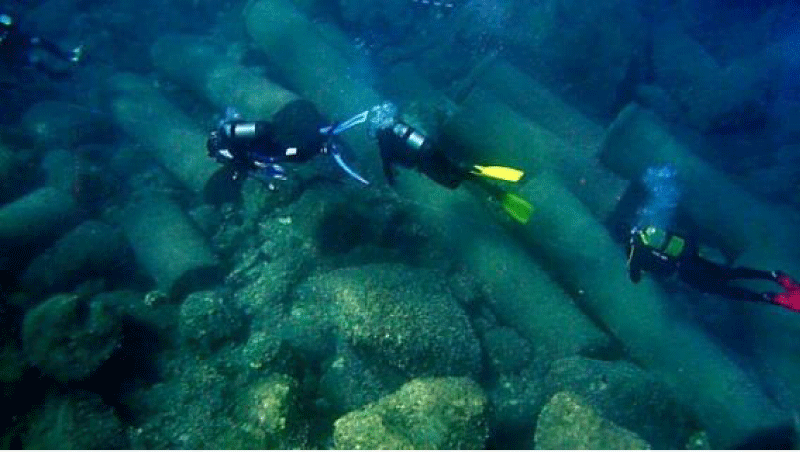
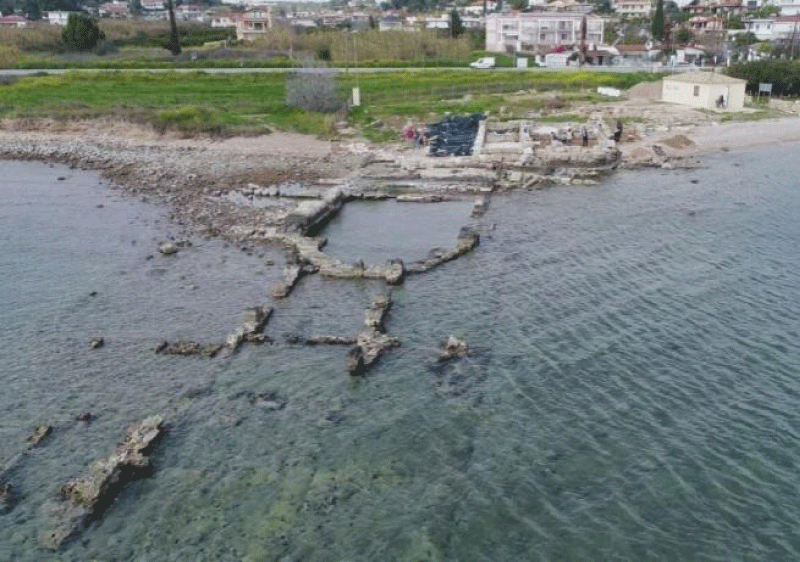
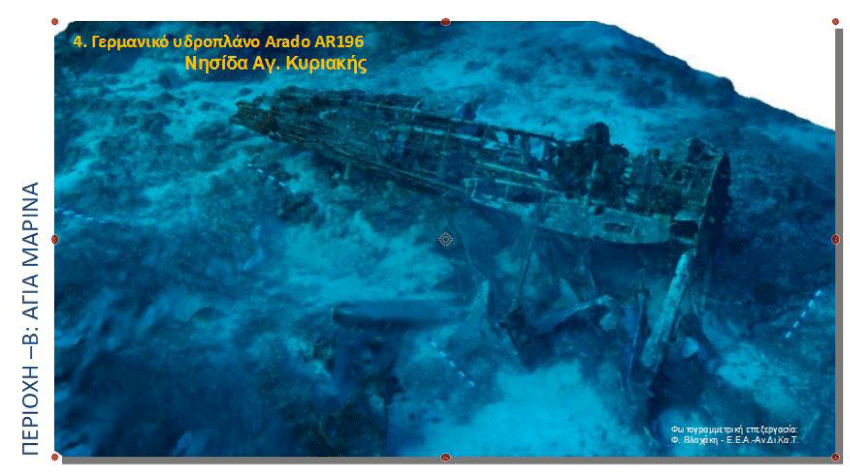
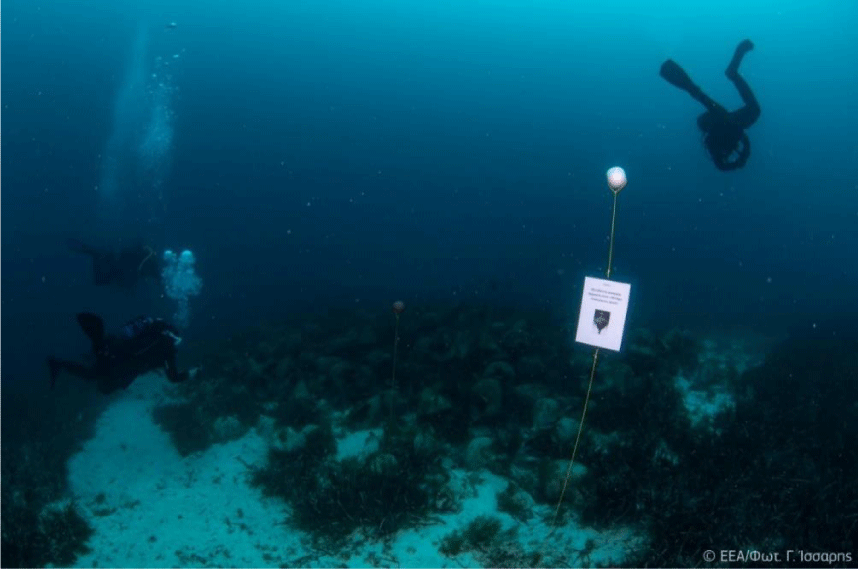
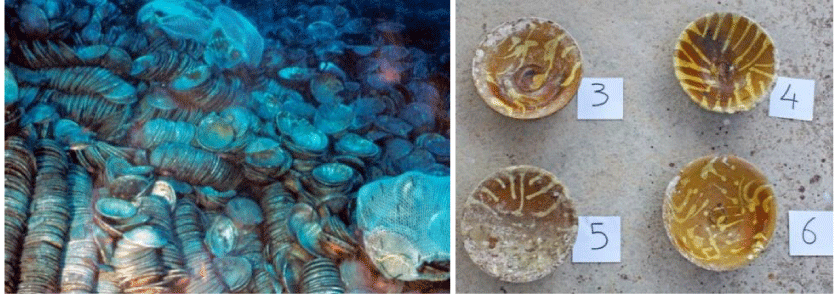
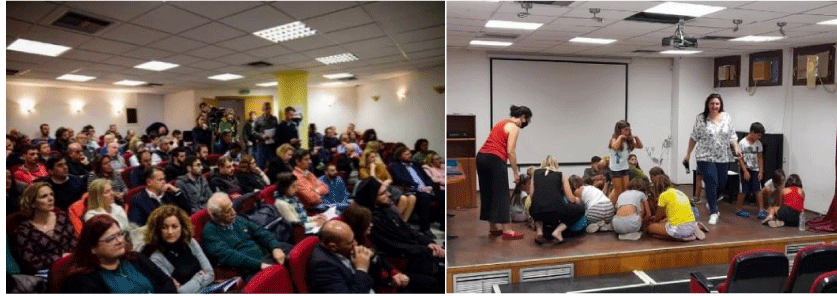
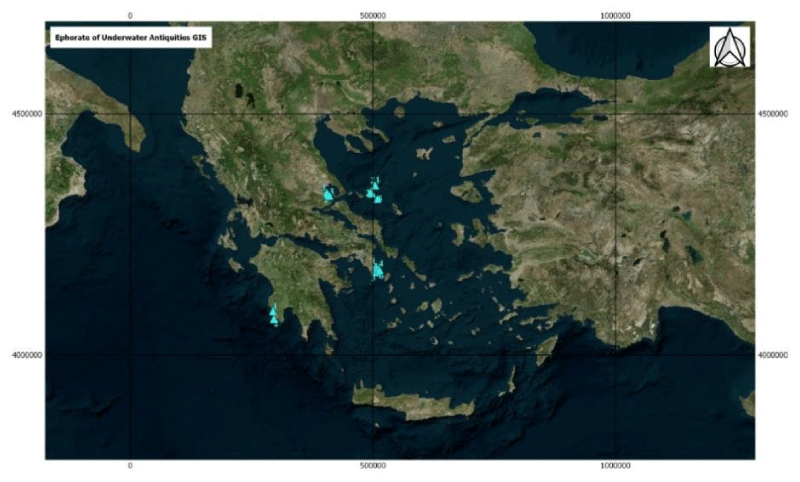
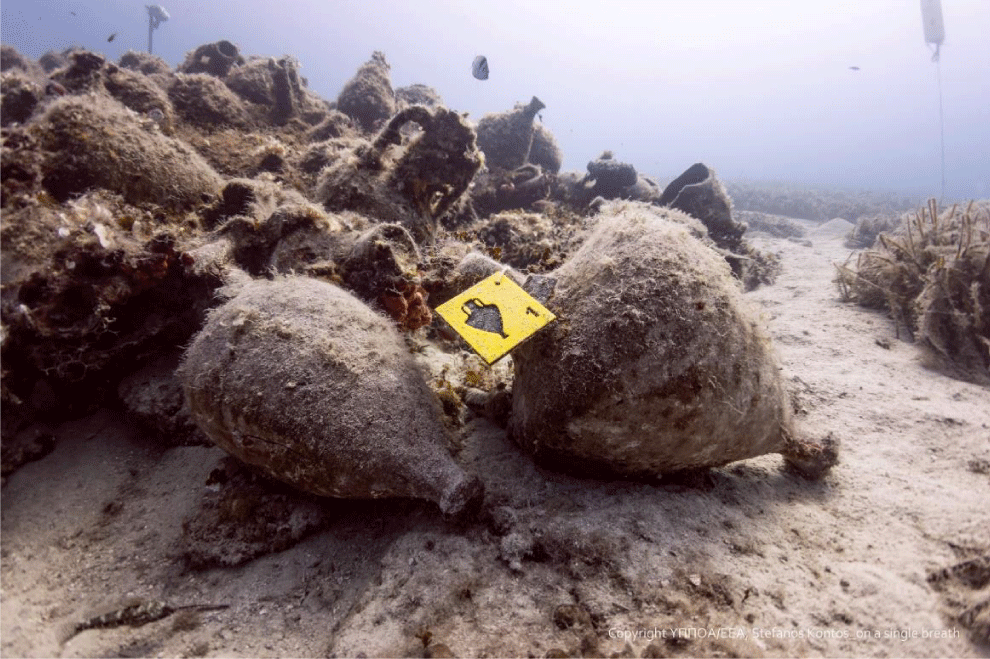
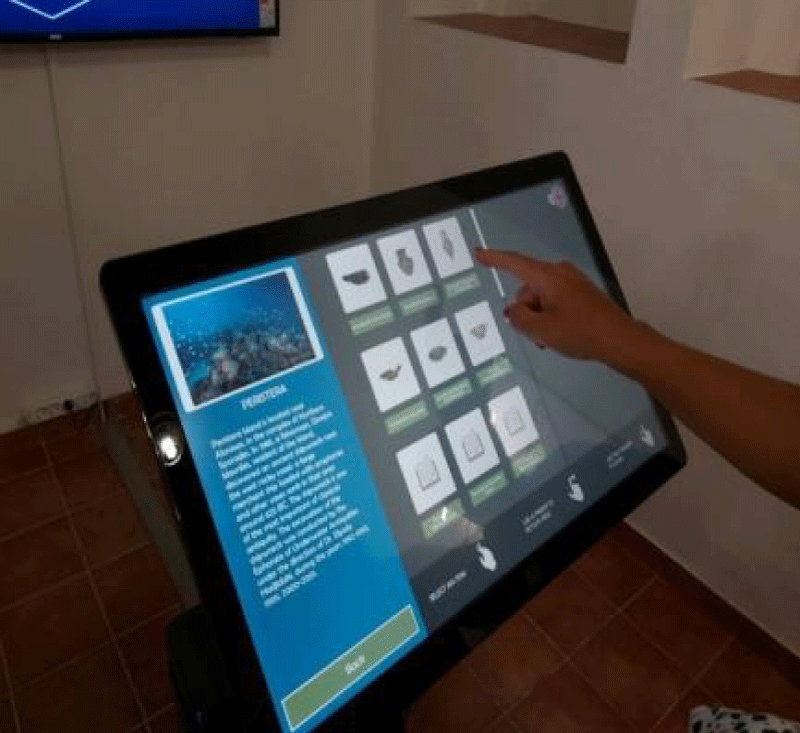
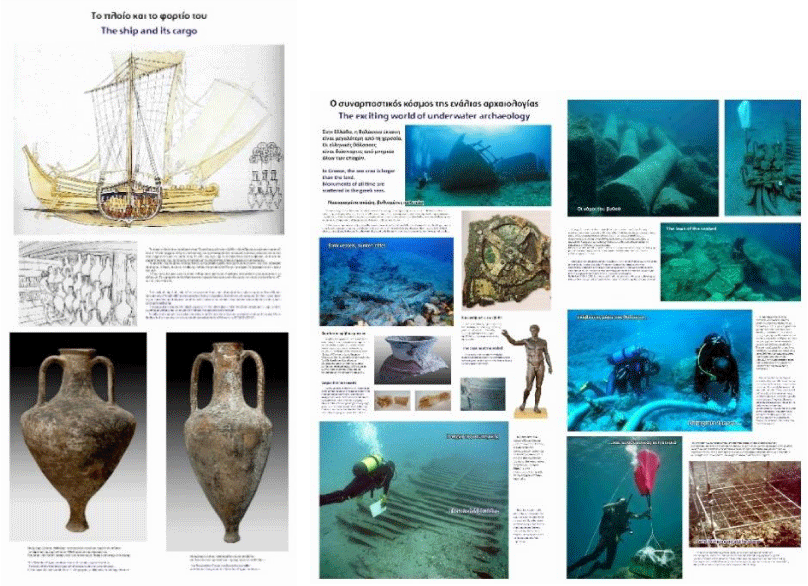
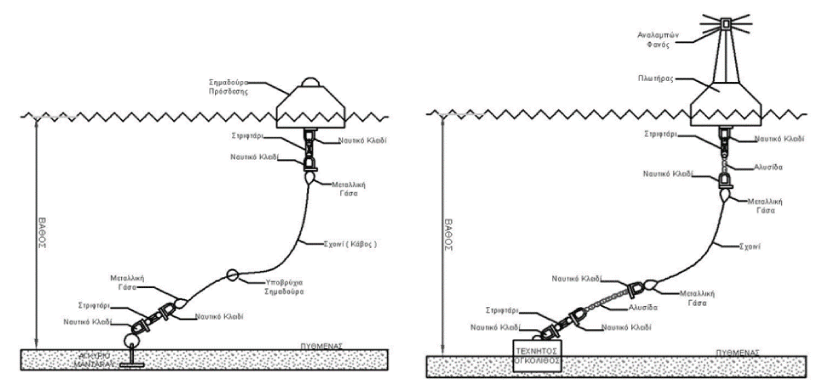
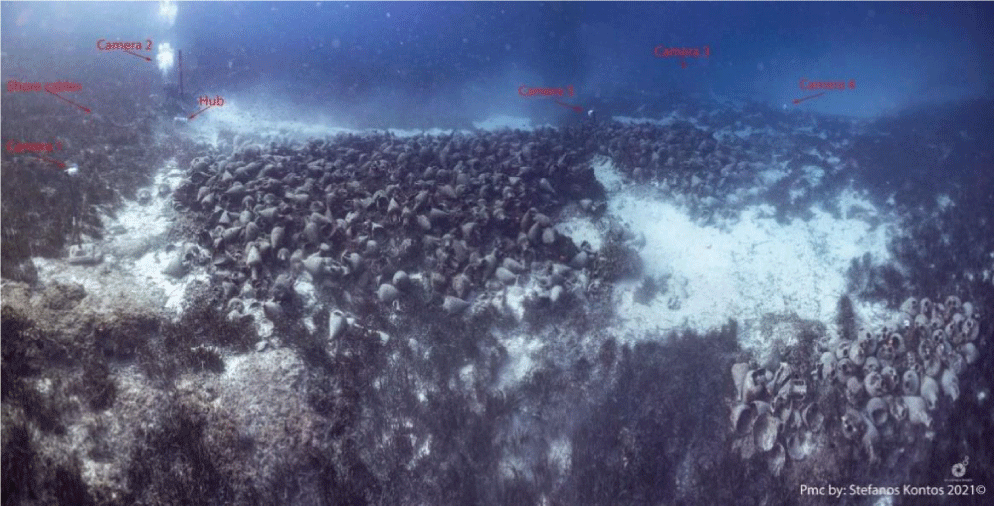
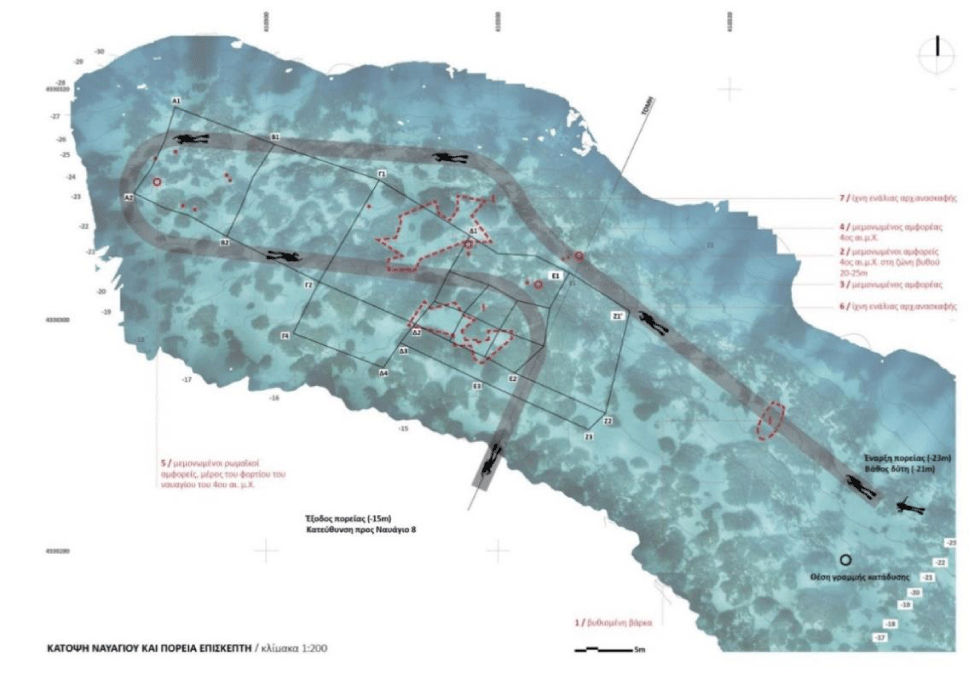
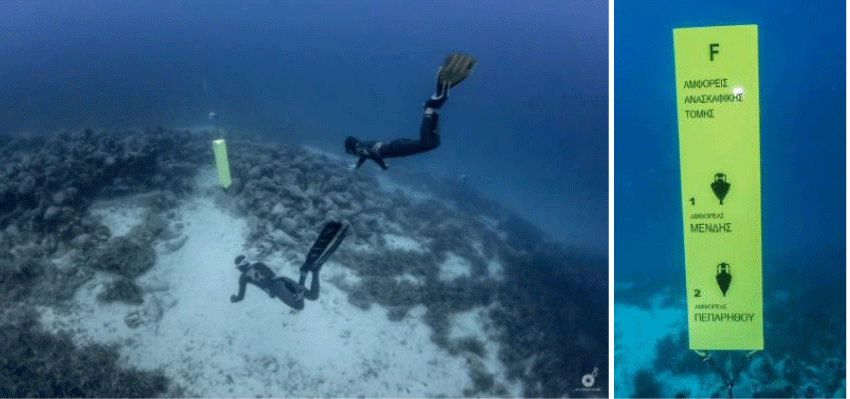
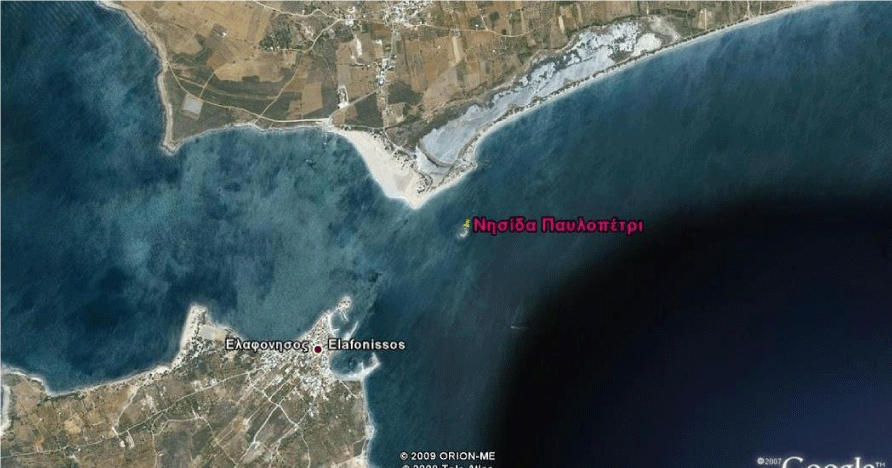
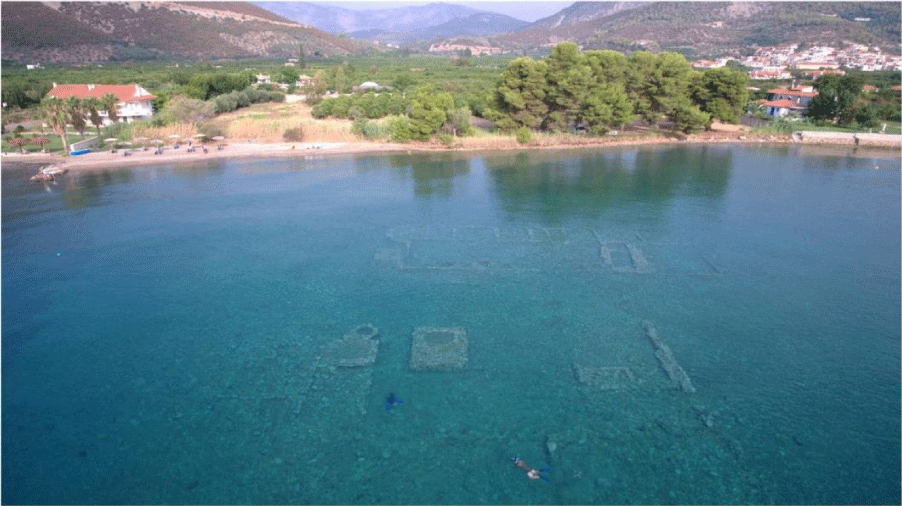
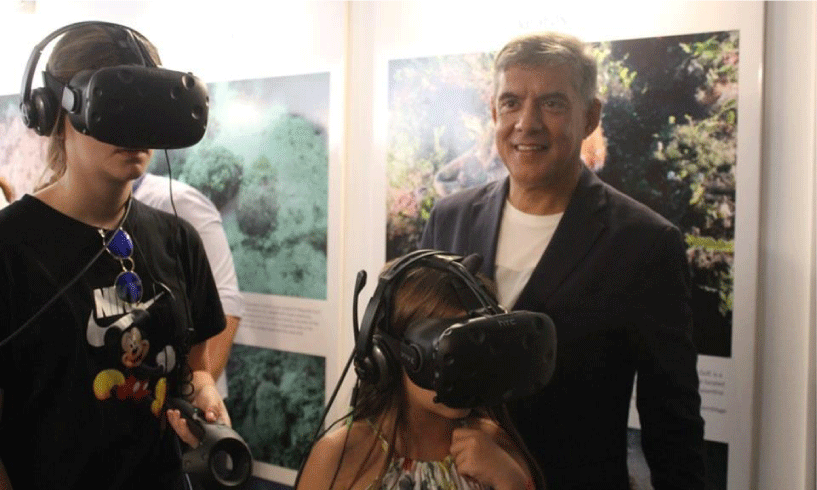
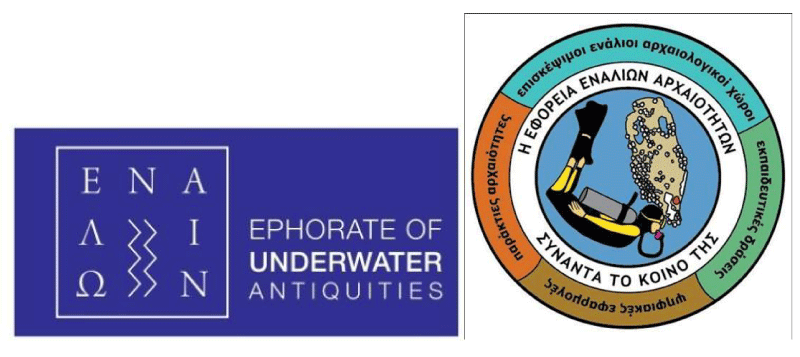

 Save to Mendeley
Save to Mendeley
